
Garlic is the mainstay of Mediterranean cooking. Many savoury dishes have garlic among their ingredients, from French and Mediterranean cuisine to curries and spicy dishes. Crushing garlic with a garlic press is used to impart the most flavour throughout a dish but fine chopping or fine grating are also good preparation techniques. It can be used in stir fry dishes, bakes and other slow cook dishes. Try your very own garlic mushrooms or mashed potato or add garlic as whole cloves to roasts which will give a superb mild, caramelised flavour.
Garlic is also known to have many health benefits and research has found it useful to maintain a healthy heart and lower blood pressure. Its medicinal properties include antibacterial qualities and is believed to help protect against the common cold and other infections.
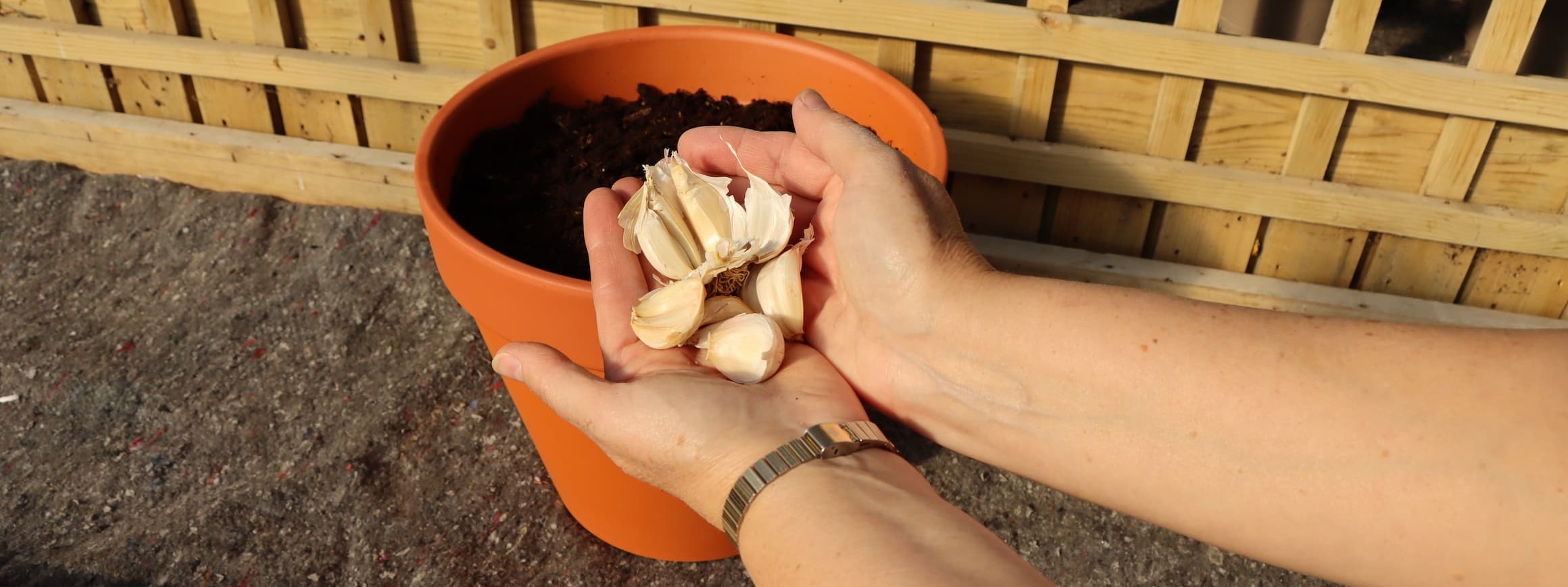
What are the different types of Garlic?
The two main types of garlic are hardneck and softneck. Hardneck varieties often have a stronger flavour and produce flower stalks while Softneck varieties have smaller tightly packed cloves, a milder flavour and store for longer. Hardneck garlic is hardier in colder climates, while softneck varieties thrive better in areas with warmer winters.
Top 3 Garlic Varieties To Grow
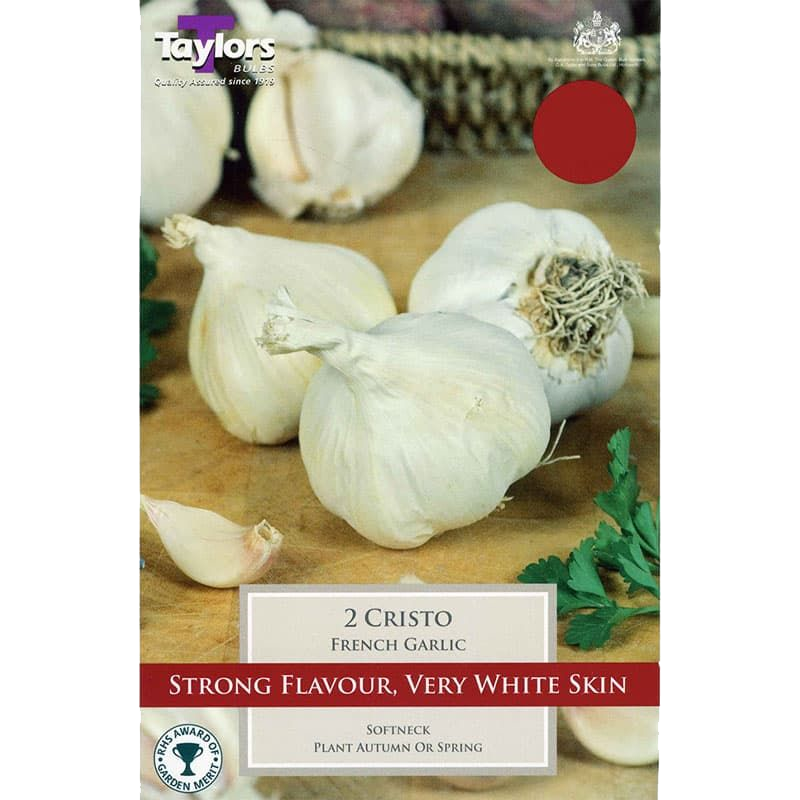
1. Garlic Cristo
Garlic Cristo has a subtle, delicate aroma and pure white bulbs. It is one of the best all-rounders for a wide variety of dishes.

2. Elephant Garlic
Elephant garlic has a lovely mild, nutty flavour. Technically this is not a true garlic but its very large cloves and delicate flavour make it our favourite for roasting and baking.
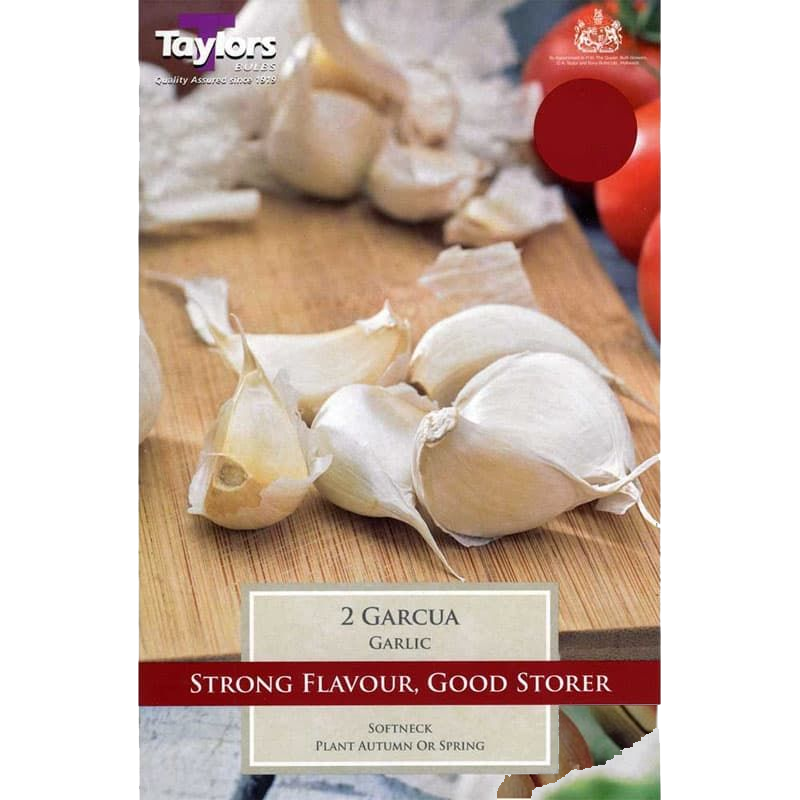
3. Garlic Garcua
Garlic Garcua has a stronger flavour. The substantial globe shaped bulbs and large oval cloves, once dried, can be stored for several months.
When should I plant Garlic?
Garlic requires a cycle of cold at the start of the growing season, so is usually planted in late autumn or early winter. Some varieties such as Garlic Early Purple White and Lautrec White can be also planted in spring but the crop is unlikely to be so good.
How to grow Garlic in a Garden or Allotment
Garlic is grown from individual cloves of the garlic bulb in late autumn or early winter. Buy virus free packs from a garden centre and avoid supermarket cloves which may have been grown overseas and are therefore not suitable for our climate or guaranteed disease free.
Choose a sunny, well drained location. If the soil is heavy and wet, we would recommend growing in module trays, overwintering in a well ventilated cold frame, greenhouse or cloche and planting out in Spring. Alternatively sow six cloves in a 30cm wide pot of multipurpose compost.



Prepare the border by adding well-rotted manure or compost. Break the garlic bulbs into individual cloves, discarding any damaged ones. Plant each clove pointy-end up, roughly twice their own depth and 15cm apart with 30cm between rows. Elephant garlic needs more space so plant 25cm apart. Laying netting or fleece over the area until the bulbs are well rooted will prevent birds from pulling them from the soil as they emerge.
If you are planting into modules to overwinter, insert one clove per cell and keep the compost moist but not too wet through the winter. Push each clove into the cell, leaving the tip just under the surface.
How to grow garlic in containers
Garlic grows well in containers. Fill your pot with a quality vegetable or potting compost, allowing space for watering. Plant 3 cloves to a 15cm (6”) pot or 6 cloves to a 30cm (12”) pot. Plant each clove pointy-end up, roughly twice their own depth Place in a sunny sheltered location.


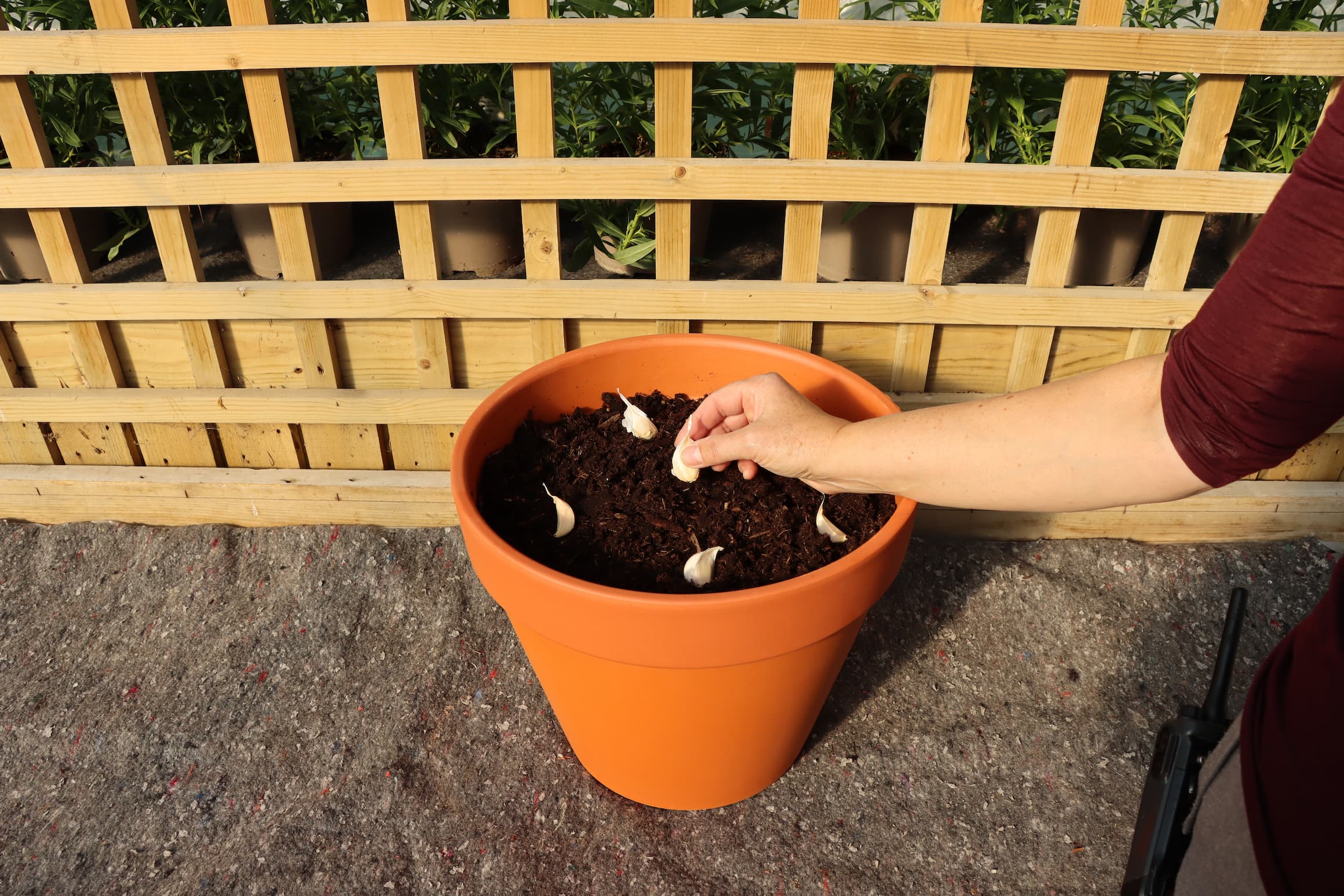
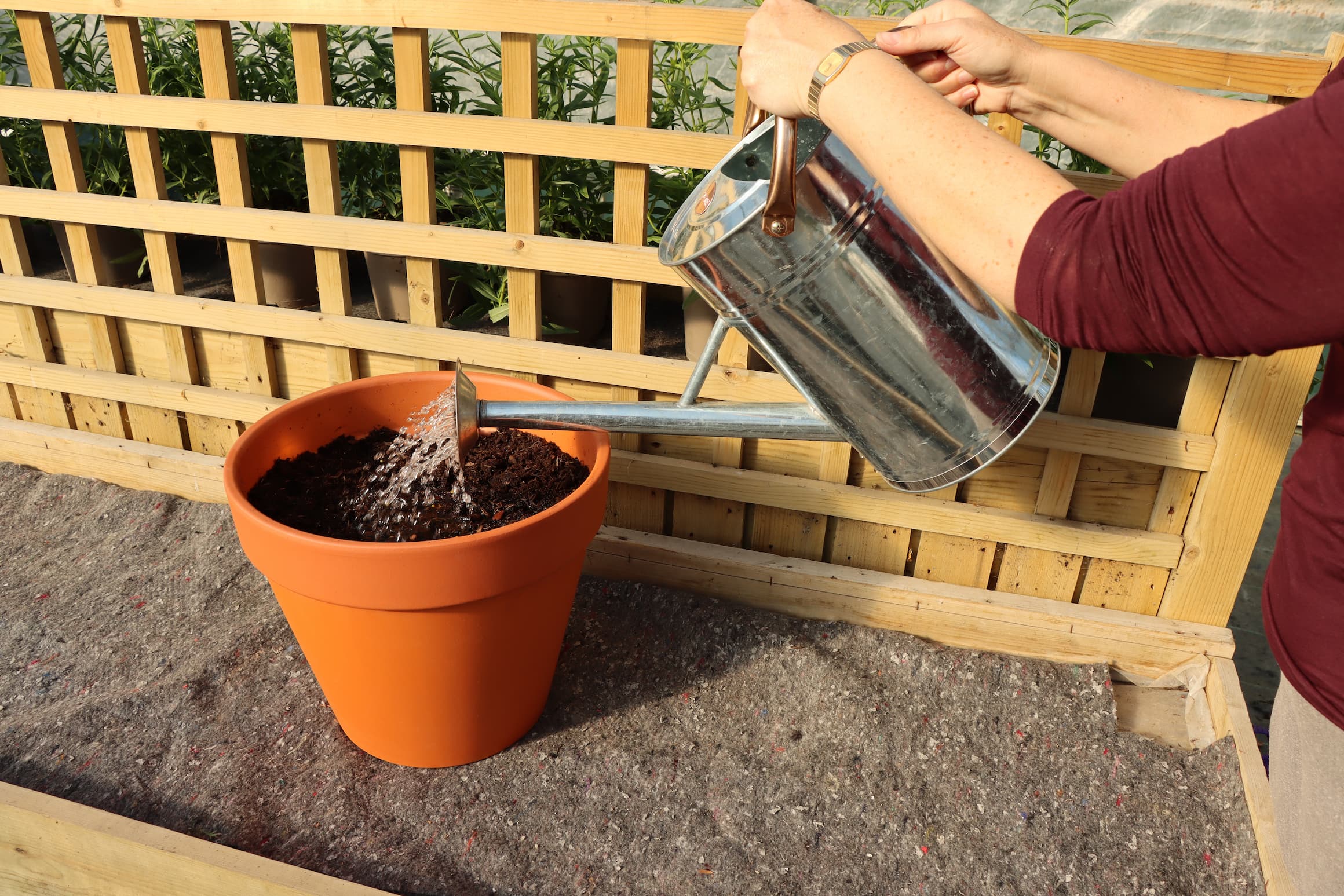
Keep the soil moist but be careful not to overwater. Once growth gets underway in spring, supplement watering with a general purpose organic liquid feed. Stop feeding a few weeks before harvest.
How to care for Garlic
All you need to do is keep the area weed-free and the soil moist, but be careful not to overwater. Avoid sprinkling water over the plants themselves as this can encourage rotting. Stop watering for the last few weeks before harvest, once the bulbs have fully developed and the foliage is starting to yellow.
In March, sprinkle a general organic fertiliser around the plants and rake lightly in to promote healthy growth.
How do you know when garlic is ready for harvesting?
The bulbs are ready to harvest when the leaves are yellow and faded. Garlic planted in the autumn will be ready by early summer. Spring planted garlic matures from mid-summer into early autumn.
Timing is key. Too early and you miss out on the last few weeks of growth. Too late and the bulbs will open up and store less well, or worse, will rot in the ground.
How to harvest garlic
Carefully lift the bulbs with a fork, taking care not to bruise them as this will affect storage. Let them dry thoroughly in the sun outdoors if the weather is dry or indoors if wet.
Drying can take several weeks. Once thoroughly dry, they are traditionally stored by interlacing into plaints and hanging in a dry store or in the kitchen. Never put dried garlic in the fridge.
Garlic can usually be stored for several months.
Fresh green garlic can be harvested earlier before the leaves change colour. This has a milder flavour and will not keep. “Green” garlic can be stored in the fridge for 7 to 14 days.
Common problems when growing Garlic
Garlic is generally trouble free.
Birds sometimes pull out or eat young plants. This is resolved by covering with fleece or netting at the early stages.
Rust can occur as bright yellow spot on the leaves in high humidity. Don’t panic as this will not generally affect the final crop. Avoid wetting the foliage when watering and make sure the crop is well spaced to allow good air movement between the plants. Make sure you rotate the crop each year and do no replant in the same spot for 3 years.
Onion rot rarely occurs as yellow, wilting foliage and rotting roots. A white fungus appears on the base of the bulb. Dig out the affected plants and burn them. Do not add to your compost heap. Avoid growing another garlic crop in the same location for seven years. A good alternative is to plant your garlic crop in containers.











